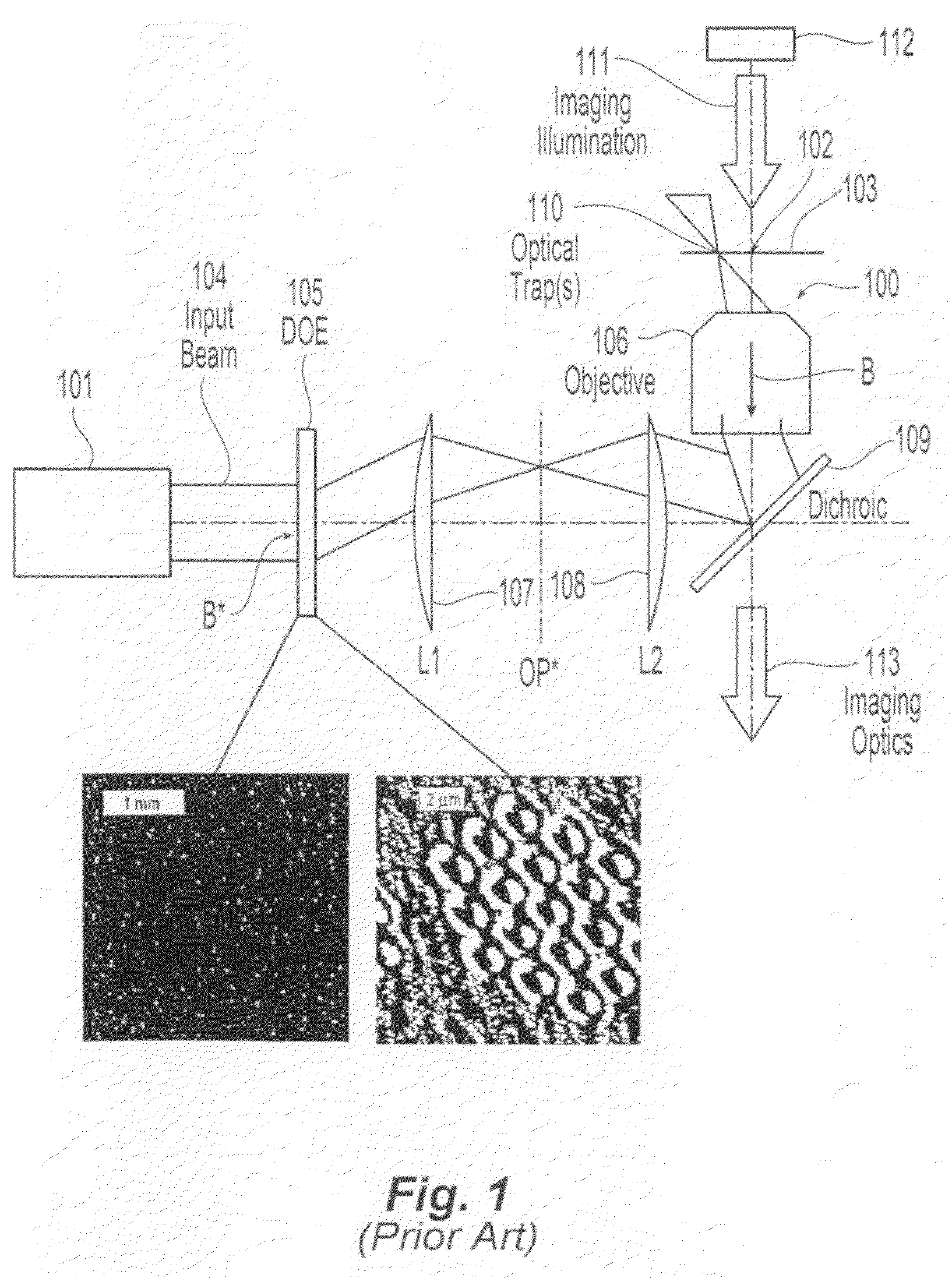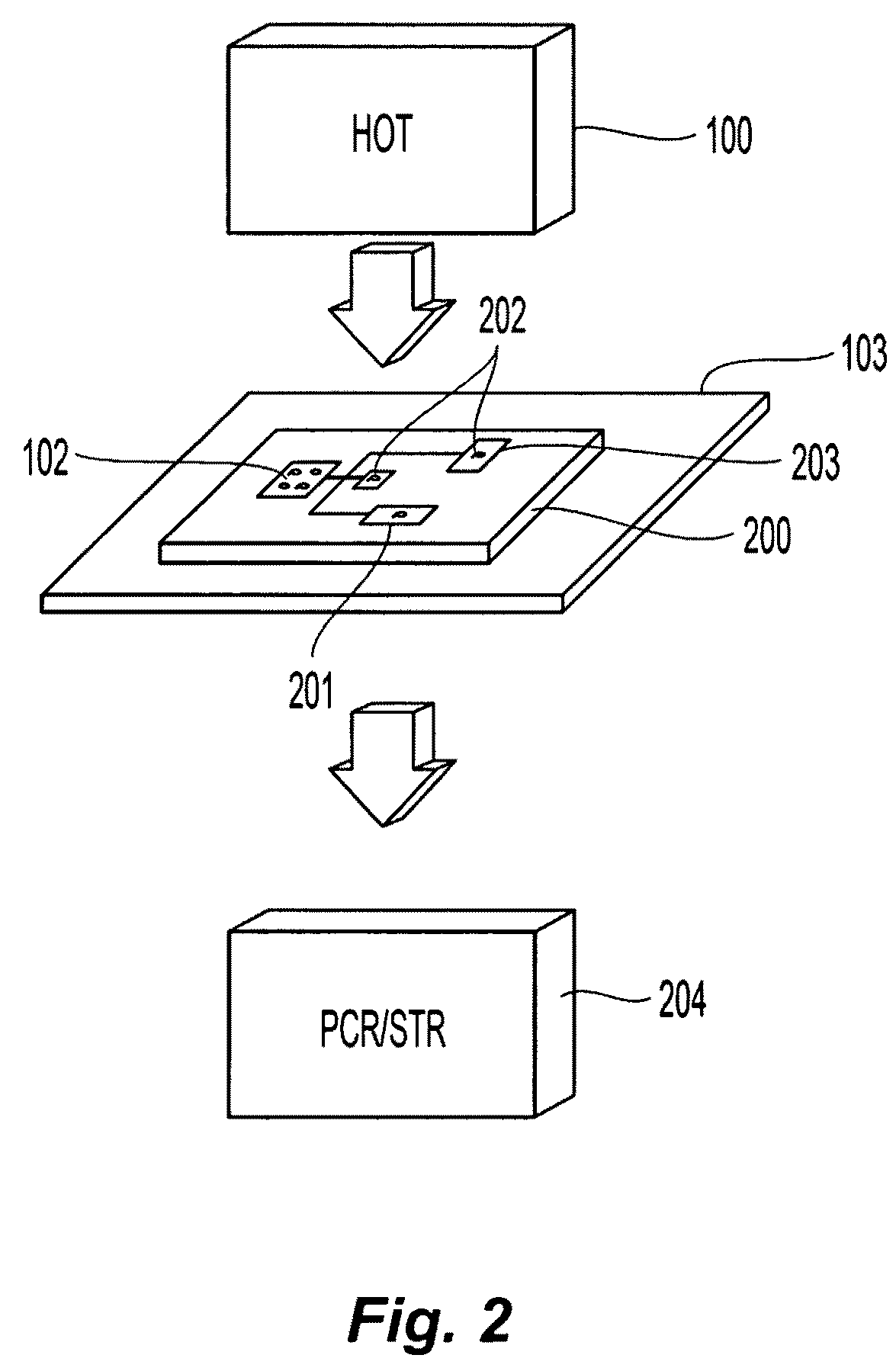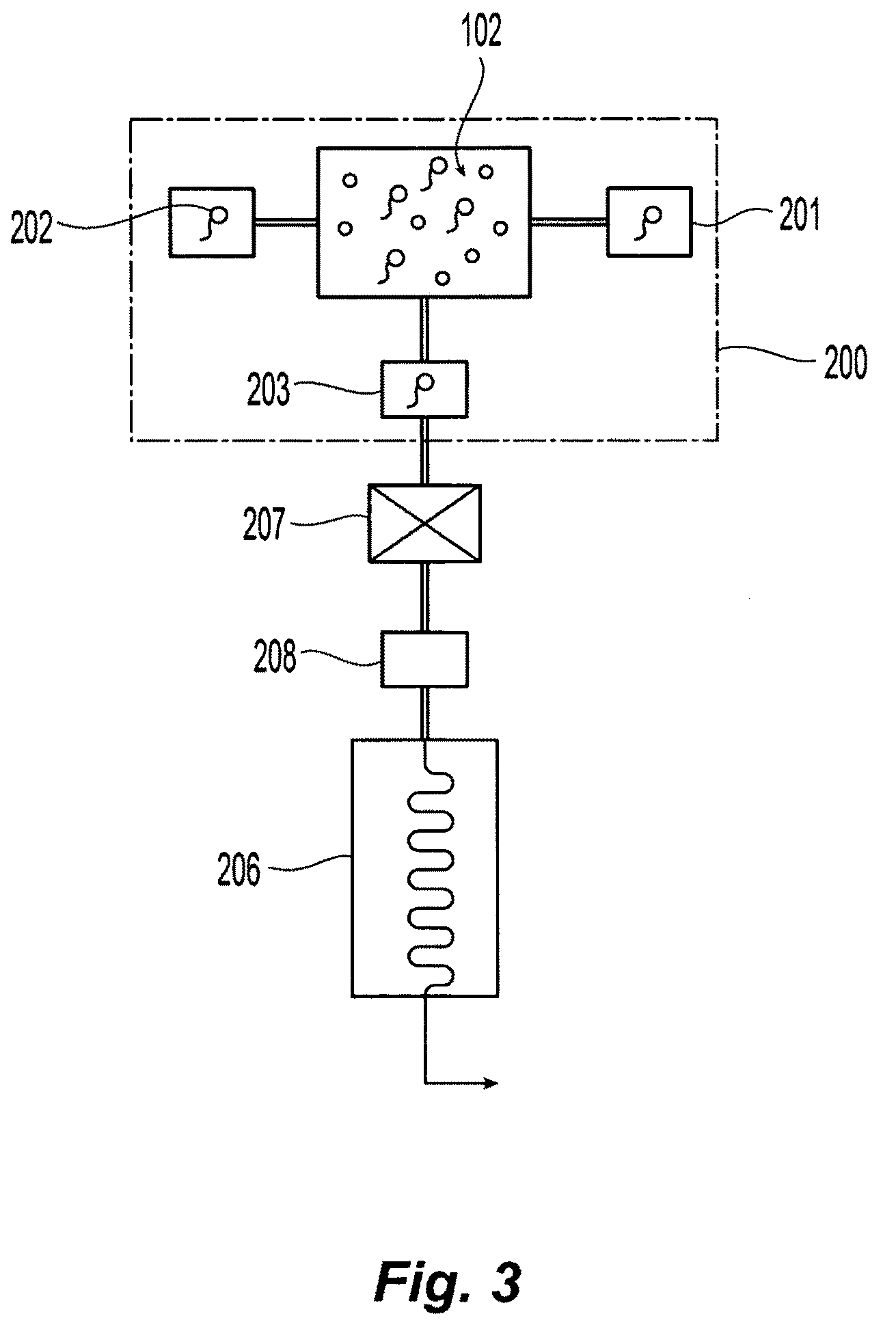Methods and apparatuses for sorting objects in forensic DNA analysis and medical diagnostics
a technology of forensic dna analysis and objects, applied in the field of methods and apparatuses for sorting objects in forensic dna analysis and medical diagnostics, can solve the problems of immature sperm cell lysing, time it takes to perform pcr analysis, and suffers from several pitfalls, so as to improve the speed of sample processing, less time, and the effect of inexpensive operation
- Summary
- Abstract
- Description
- Claims
- Application Information
AI Technical Summary
Benefits of technology
Problems solved by technology
Method used
Image
Examples
first embodiment
[0052]In a first embodiment consistent with the present invention, holographic optical trapping (HOT) is used for identifying and trapping sperm cells, and sorting them from other contaminating cells in a sexual assault crime sample.
[0053]The HOT apparatus 100 (see U.S. Pat. No. 6,055,106, to Grier et al., for example, which is herein incorporated by reference), includes a laser 101 which is used as a light source, to optically trap and manipulate objects in a sample 102 on a support 103 (see FIG. 1). Specifically, the laser 101 emits a collimated laser beam 104 which is shaped by a diffractive optical element (DOE) 105, such as a spatial light modulator (SLM) 105, and transferred to a back aperture of an objective lens 106 via, for example, telescope lenses 107, 108 and dichroic mirror 109. The beam 104 is diffracted by the DOE 105 into a plurality of beamlets and forms a plurality of independently movable optical traps 110 on the support 103 of a microscope apparatus (of which obj...
second embodiment
[0081]In a second embodiment consistent with the present invention, a microfluidic chip 300 having chambers can be used with or without HOT 100, to perform the sperm sorting prior to PCR-based STR analysis 301 (see FIG. 4).
[0082]In particular, the proposed method of sperm sorting can be performed on an optically clear microfluidic chip 300 thereby allowing operations on very small volume samples. Sample separation using a microfluidic chip 300 with chambers is well-known in the art, and have been broadly commercialized. Here by modulating the idea and incorporating channels at different layers (in depth or z-direction) in the microfluidic chip offers single cell separation.
[0083]For example, a custom-made microfluidic chip 300 (see FIG. 4) with an input chamber 304 and multiple output chambers 305 (connected via channels 306 but which can be isolated from one another following sperm sorting), may be used for separating single sperm cells from other contaminants (non-sperm) in the sa...
fourth embodiment
[0100]In a fourth embodiment consistent with the present invention, eluted cells from a sample 500 (see FIG. 6)—are eluted into an inlet chamber 501 on a microfluidic chip 502, where the sample 500 is deposited.
[0101]Contaminants (i.e., epithelial cells) from the sample 500 settle on the bottom of the inlet chamber / reservoir 501 and sperm cells are mobilized via fluid flow through channel 504 to collect in outlet chamber reservoir 503. In a second stage, individual collection reservoirs 505-508 collect sperm sorted via channel 509, according to previously described methods.
[0102]In a third stage, lysis of individual sperm takes place in chambers 510-513, with the extraction of the DNA being accomplished by single cell PCR (on-chip PCR) according to previously described methods.
[0103]In another embodiment, the process of the PCR and STR analysis can be automated and high speeds can be achieved which will eliminate another bottleneck often experienced in the current approaches used in...
PUM
| Property | Measurement | Unit |
|---|---|---|
| length | aaaaa | aaaaa |
| length | aaaaa | aaaaa |
| optically transparent | aaaaa | aaaaa |
Abstract
Description
Claims
Application Information
 Login to View More
Login to View More - R&D
- Intellectual Property
- Life Sciences
- Materials
- Tech Scout
- Unparalleled Data Quality
- Higher Quality Content
- 60% Fewer Hallucinations
Browse by: Latest US Patents, China's latest patents, Technical Efficacy Thesaurus, Application Domain, Technology Topic, Popular Technical Reports.
© 2025 PatSnap. All rights reserved.Legal|Privacy policy|Modern Slavery Act Transparency Statement|Sitemap|About US| Contact US: help@patsnap.com



